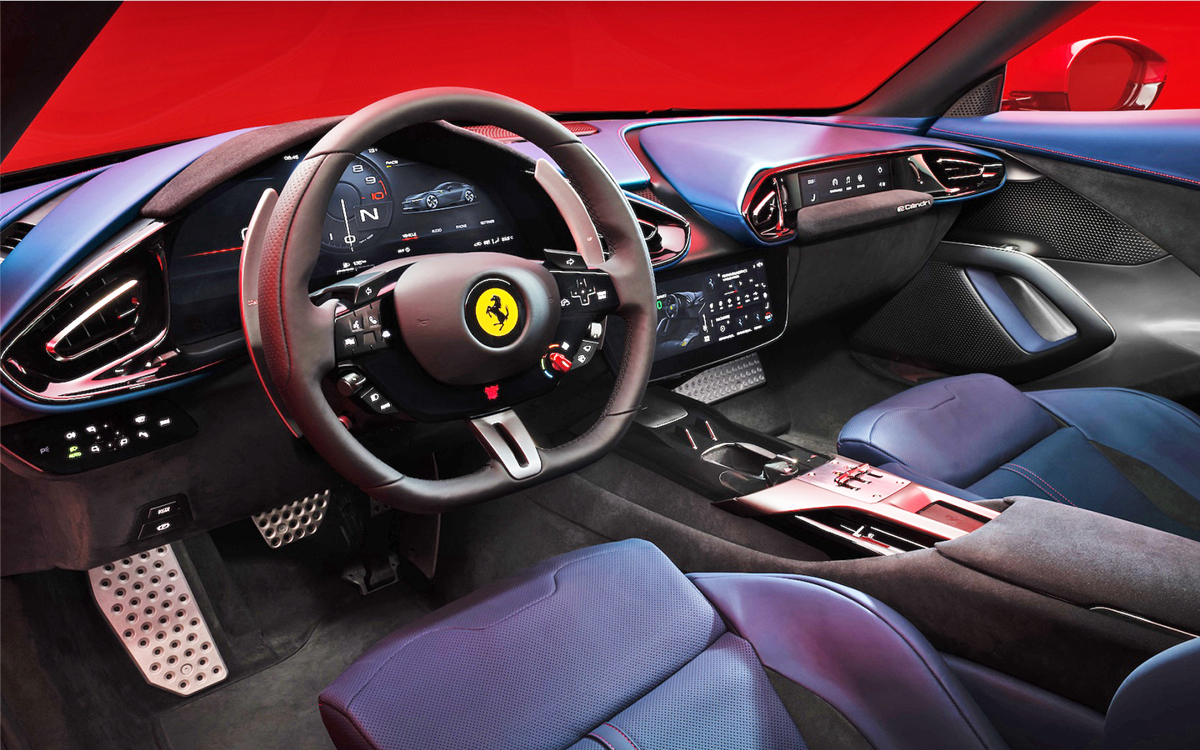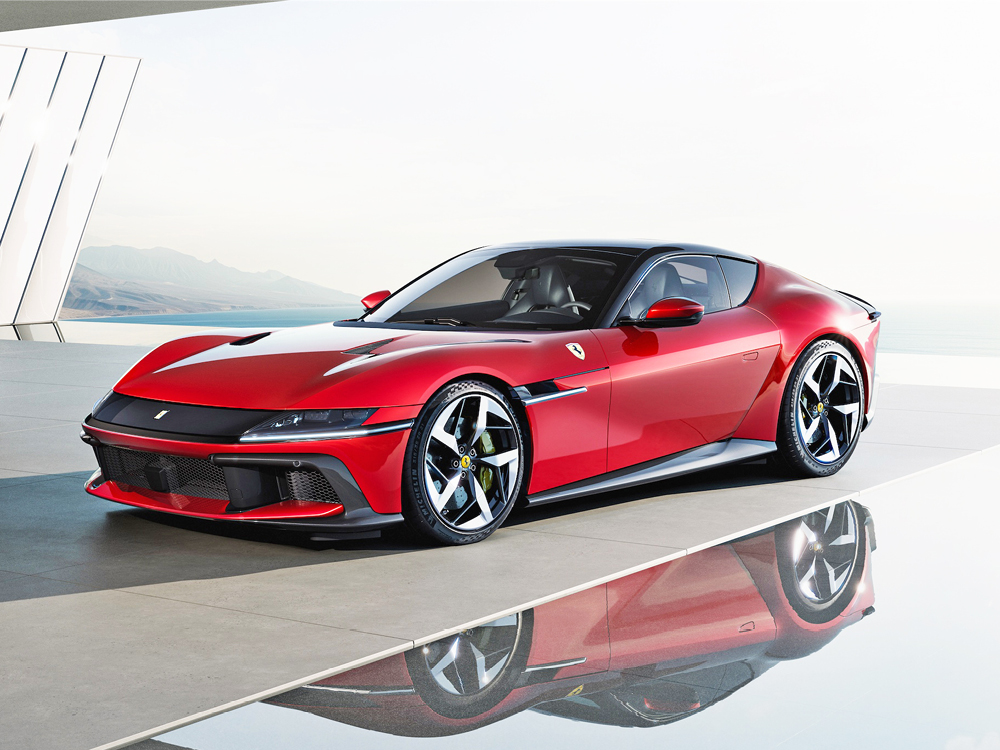Maranello Surprises…Again
Boy, do we have bad timing. Just days after we posted commentary on Ferrari’s soaring hybrid sales, Maranello sprung a decidedly non-hybrid surprise on the auto world. You are looking at the 12Cilindri, a front-engine V-12 model to be offered as a berlinetta and convertible. Give yourself a gold star if you figured out the name was Italian for “12 cylinder.”
The successor to the 812 Superfast and 812 GTS, the 12Cilindri uses pure gas-fueled V-12 power, with more of it than its predecessor. In our reviews of the 812 models, we mused – incorrectly, it turns out – that they could be Ferrari’s final naturally aspirated, non-hybrid V-12s. So we’ll skip opinions on the matter here and proceed to the facts about the latest masterpiece from Maranello.
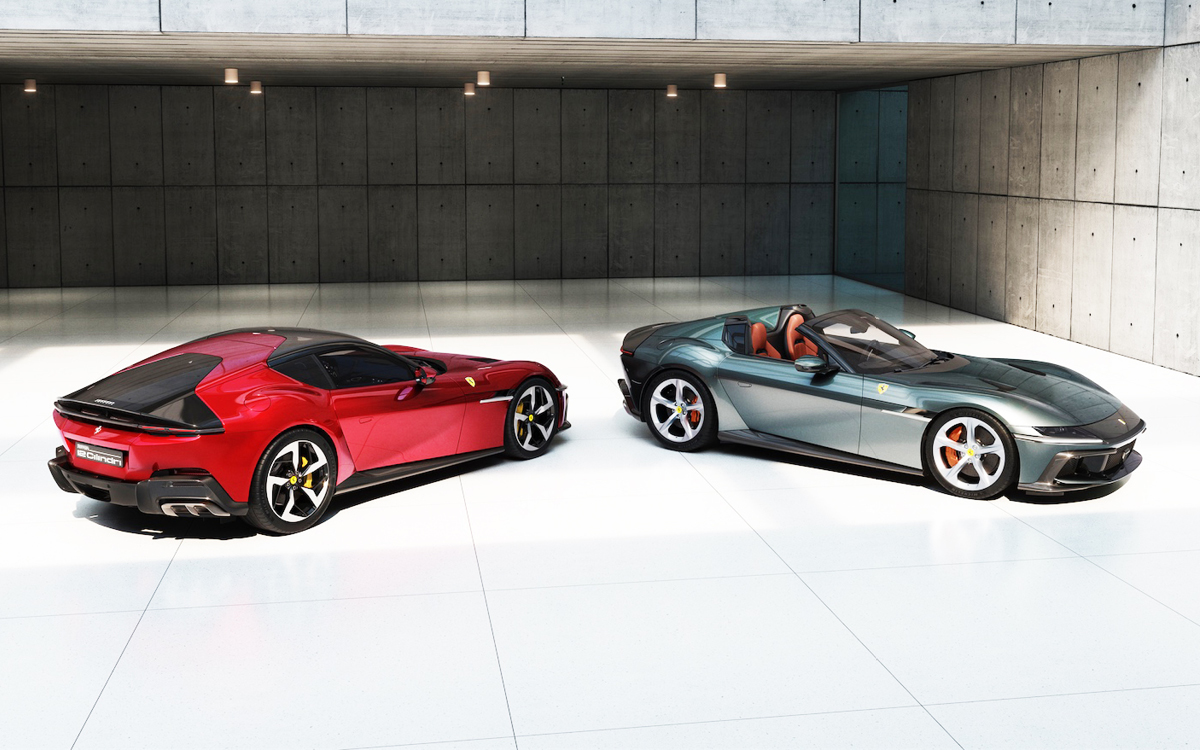
A New Golden Age of Ferrari Design?
Since the return of the two-seat, V-12 berlinetta to the Ferrari family with the 1996 550 Maranello, marque purists and auto media have made allusions to the king of the genre, the fabulous 365 GTB/4 Daytona and its Daytona Spider sibling. With the 12Cilindri, Ferrari designers made that connection as clear as day with the general shape and more specifically, the front-end design.
There is no mistaking their inspiration for the sloping front edge that curves into the fenders. The big, front-hinged clamshell-style hood eliminates cutlines at the fender tops. The Ferrari 12Cilindri is not a retro design, though, and the V-8 Roma has similarly pulled from the marque’s 1960s design heritage in a very appealing way.
Both the Roma and 12Cilindri were designed in-house, as Ferrari’s association with Pininfarina (now a Mahindra company) ended some years ago. Credit for both cars, as well as the SF90 and 296 models and a few before that, belongs with Flavio Manzoni and his superb team at Ferrari Centro Stile.
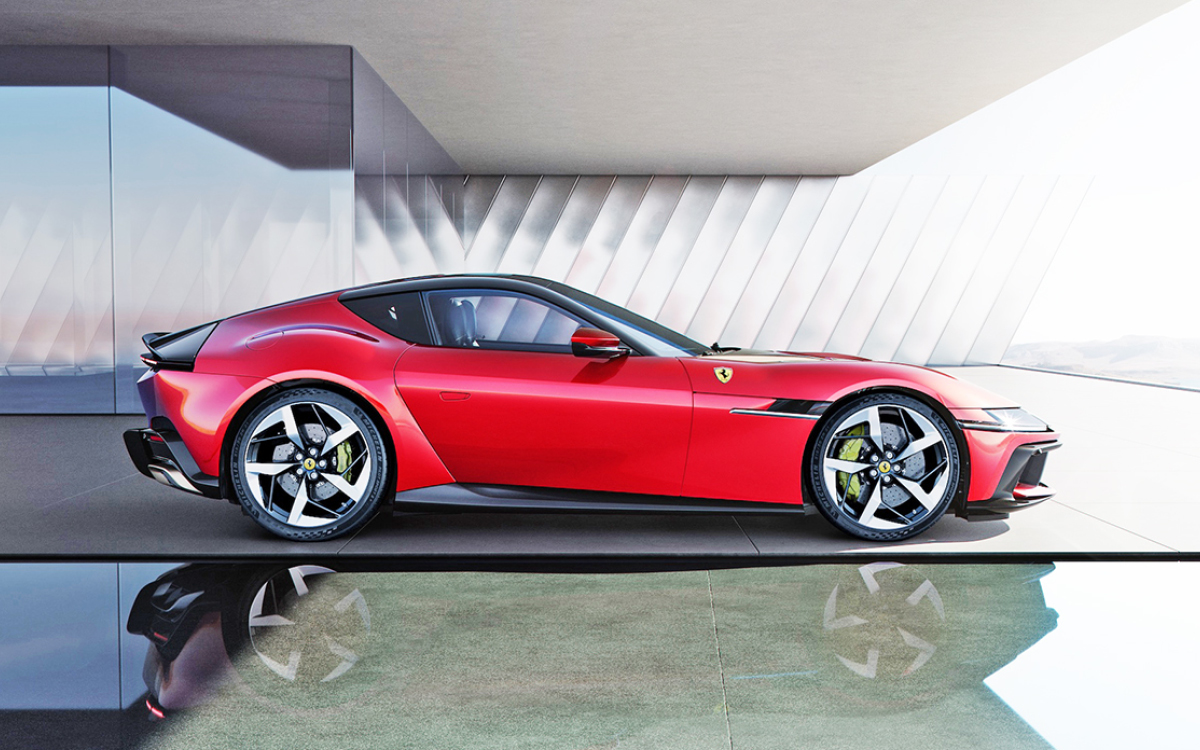
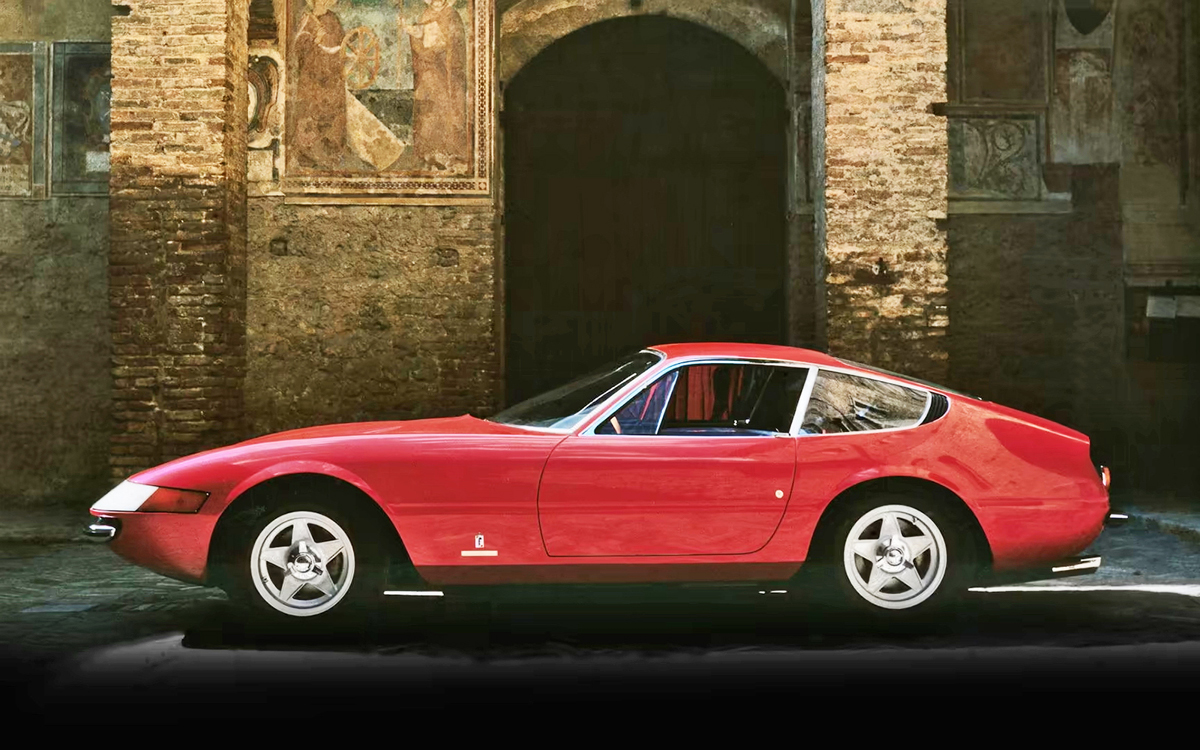
Functionally Beautiful
Step around to the back of the 12Cilindri, and you’ll see how Ferrari took a completely different design road than the Roma, which looks conservative by comparison. The 12Cilindri’s top rear looks like all dark glass but is a combination of aluminum and glass. At the rear edge, integrated black-painted, left and right winglets are independently controlled for maximum aero downforce when needed.
Viewed from above, the design creates a delta shape, though it would likely be hard to distinguish on a black car. The 12Cilindri Spider has a simpler rear design. Its soft top will raise or lower in just 14 seconds and, when lowered, stows cleanly under a panel.
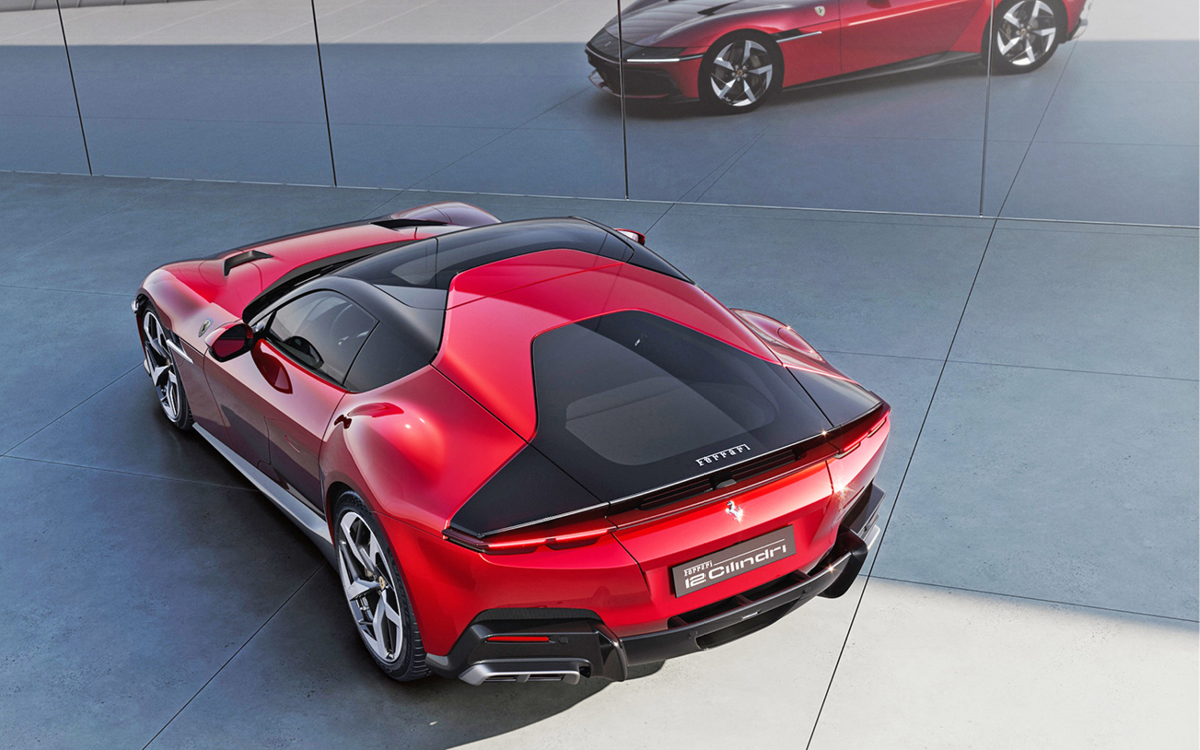
Superfast, of Course
Ferrari is not one for introducing new models with less power than their predecessors, and it upholds that tradition for the 12Cilindri. The 6.5-liter V-12 is a revised version of the engine from the 812, boasting internal parts with lower friction and mass. Better breathing comes courtesy of variable-geometry intake ducts.
It all adds up to 819 horsepower at 9,250 rpm 500 lb-ft. of peak torque at 7,250 rpm (versus a mere 789 hp for the 812 models). Some may be quick to point out that the 296, which uses a 3.0-liter twin-turbo V-6 teamed with an electric motor, yields identical 819 hp peak output, with 546 lb-ft. of torque from the V-6 and another 232 from the electric motor at max output. That’s called progress.
Ferrari claims a 3,439-lb. dry weight for the new 12Cilindri, but since the 812 GTB weighed about 3,800, and Ferrari says the new car is heavier, well, you can do the math. Ferrari has claimed 0-100 km/h (62 mph) in 2.9 seconds for the 12Cilindri. A 211+ mph top track speed is also claimed, though you might need the Mulsanne Straight at Le Mans or an airport runway to hit it.
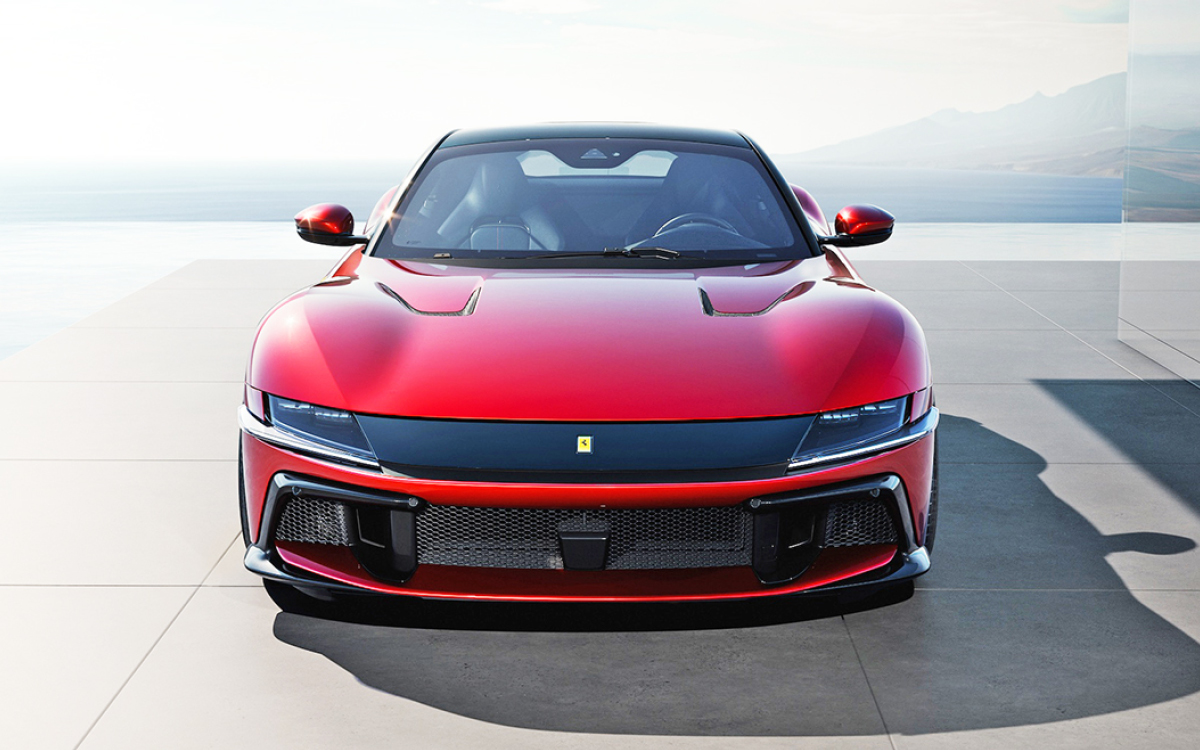
Chassis Magic
The new V-12 is teamed with an eight-speed dual-clutch automatic transmission, replacing the seven-speed unit used in the 812. The V-12 is set well back in the chassis, which helps yield the car’s 48:52 weight distribution and demands that gorgeous long hood. The 12Cilindri’s chassis is chock full of computer-controlled handling assistants, including rear-wheel steering, magnetorheological dampers and Side Slip Control. The almost-magic Virtual Short Wheelbase 3.0 system improves turn-in agility in the way a true shorter wheelbase might.
The ABS Evo brake system is “brake-by-wire,” meaning computer controlled, and includes standard carbon-ceramic rotors. The 21-inch wheels wear either Michelin Pilot Sport S5 or Goodyear F1 Eagle SuperSport summer tires that were specially designed for this car.
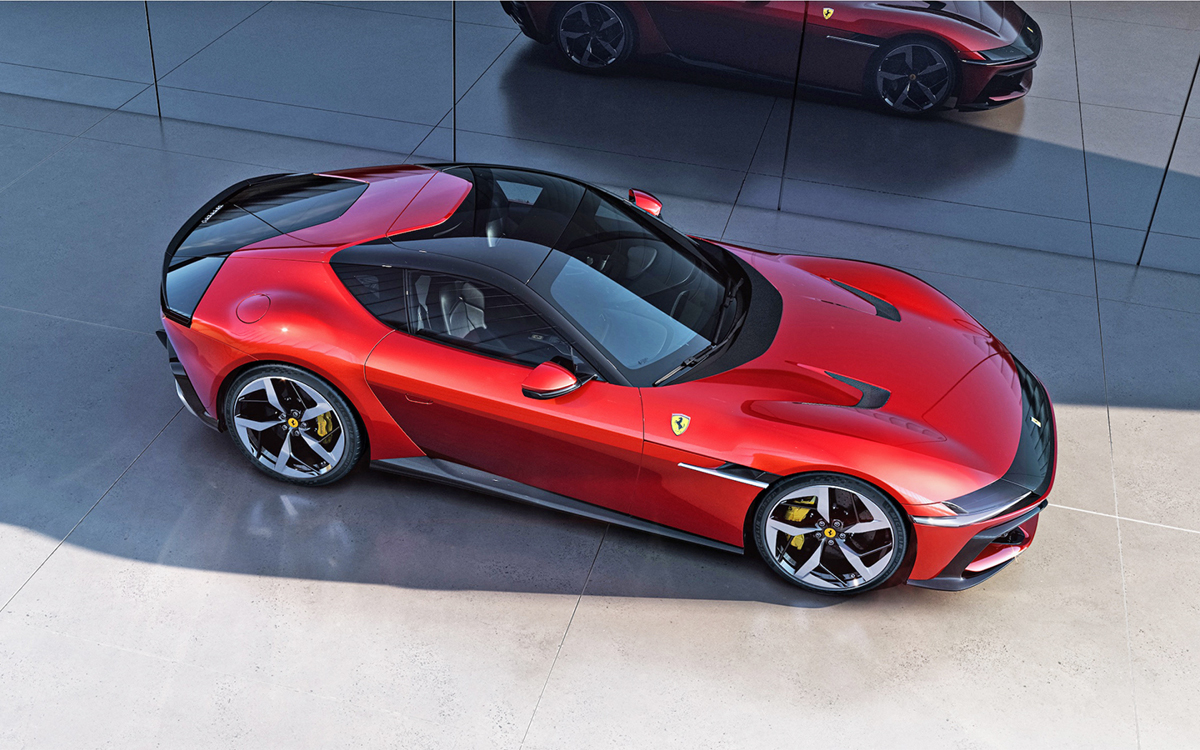
Pricing As You Might Expect
The 12Cilindri’s cockpit, while equipped with digital screens for the driver and passenger, manages to keep the tech looking low-key. While you could not call it retro, the design manages to at least channel the elegant simplicity seen on classic Ferraris.
The 12Cilindri Berlinetta will start in the low $400,000 range, while the Spider, which arrives later in the year, will be up around $465,000. Those prices are, of course, before any personalization, so expect to see many $500,000+ cars. If you’re planning to get a Ferrari 12Cilindri, why not spec it like it’s the last non-hybrid V-12 … oops, we promised we wouldn’t say that this time.
